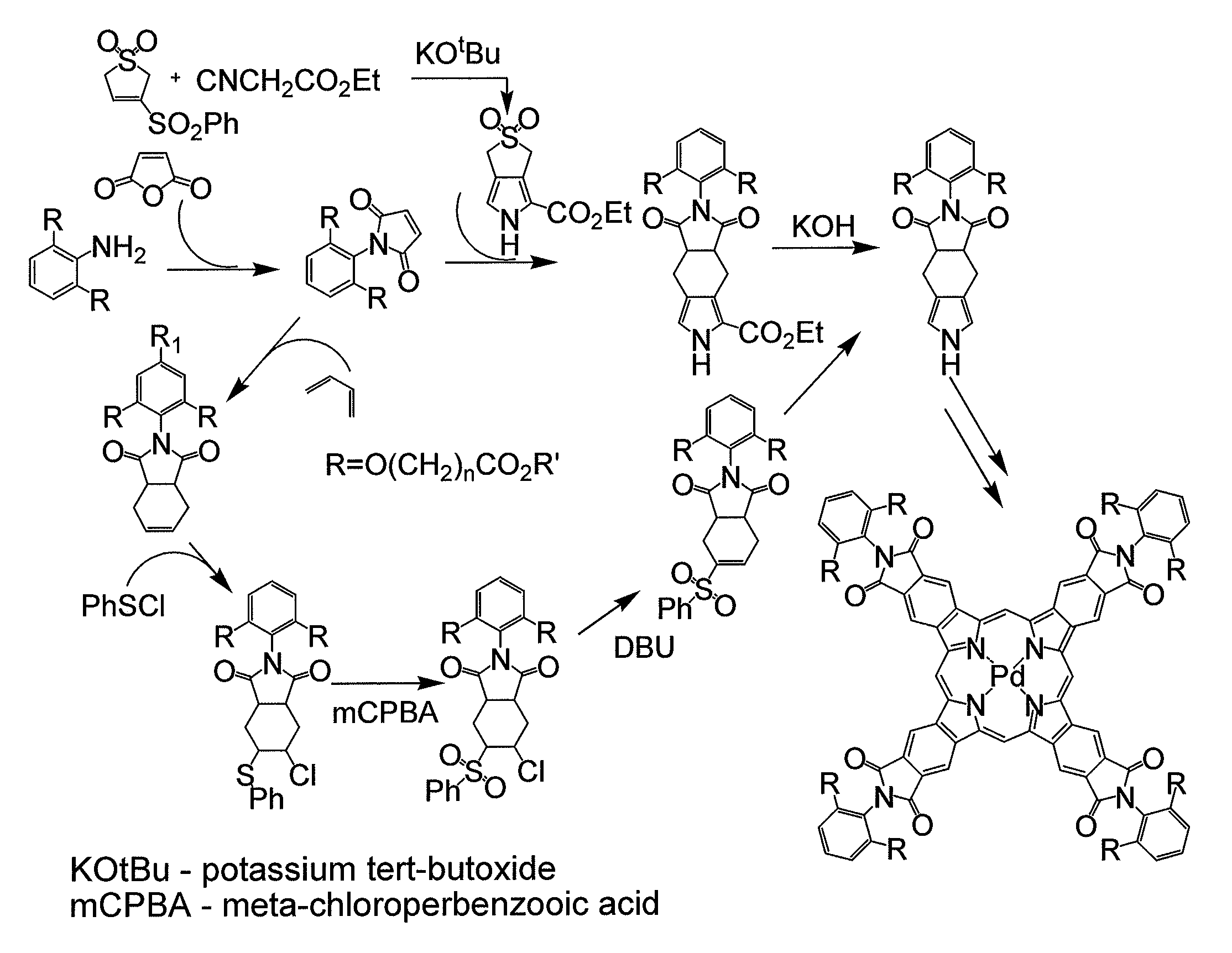Phosphorescent meso-unsubstituted metallo-tetrabenzoporphyrin probe molecules for measuring oxygen and imaging methods
a phosphorescent probe and meso-unsubstituted technology, applied in the field of phosphorescent probe molecules, can solve the problems of inefficiency of whole-linking reaction, and achieve the effects of improving the structure of dendritic phosphorescent probes, improving phosphorescence emission, and improving chemical structur
- Summary
- Abstract
- Description
- Claims
- Application Information
AI Technical Summary
Benefits of technology
Problems solved by technology
Method used
Image
Examples
Embodiment Construction
[0029]The present invention provides highly efficient and highly soluble phosphorescent probes suitable for measurements of oxygen in tissue of animals and humans. Inventive probes are surrounded by an inert globular structure, an example of which is derivatized PdTBP (Pd tetrabenzoporphyrins) surrounded by three-dimensional supramolecular structure known as a “dendrimer,” which is well understood in the field.
[0030]Oxygen levels in biological systems can thus be measured by the phosphorescence quenching method using probes with controllable quenching parameters and defined biodistributions. A general approach is provided to the construction of phosphorescent nanosensors with tunable spectral characteristics, variable degrees of quenching, and a high selectivity for oxygen that are soluble in aqueous or organic solvents (e.g., benzene, toluene, hexane, octane, tetrahydrofurane, mineral oil, and the like), permitting phosphorescence measurements throughout the entire ambient oxygen r...
PUM
| Property | Measurement | Unit |
|---|---|---|
| molecular weights | aaaaa | aaaaa |
| weight | aaaaa | aaaaa |
| phosphorescence quantum yields | aaaaa | aaaaa |
Abstract
Description
Claims
Application Information
 Login to View More
Login to View More - R&D
- Intellectual Property
- Life Sciences
- Materials
- Tech Scout
- Unparalleled Data Quality
- Higher Quality Content
- 60% Fewer Hallucinations
Browse by: Latest US Patents, China's latest patents, Technical Efficacy Thesaurus, Application Domain, Technology Topic, Popular Technical Reports.
© 2025 PatSnap. All rights reserved.Legal|Privacy policy|Modern Slavery Act Transparency Statement|Sitemap|About US| Contact US: help@patsnap.com



